Welcome to MAITRII ~Our 'Omotenashi'
Welcome to MAITRII
マイトリーへようこそ ~季節のお出迎え~
'Omotenashi' at Maitrii
We entertain our guests with a variety of Japanese traditional seasonal decorations throughout the year .
Here are some photos of our seasonal scenes.
We hope you enjoy them.
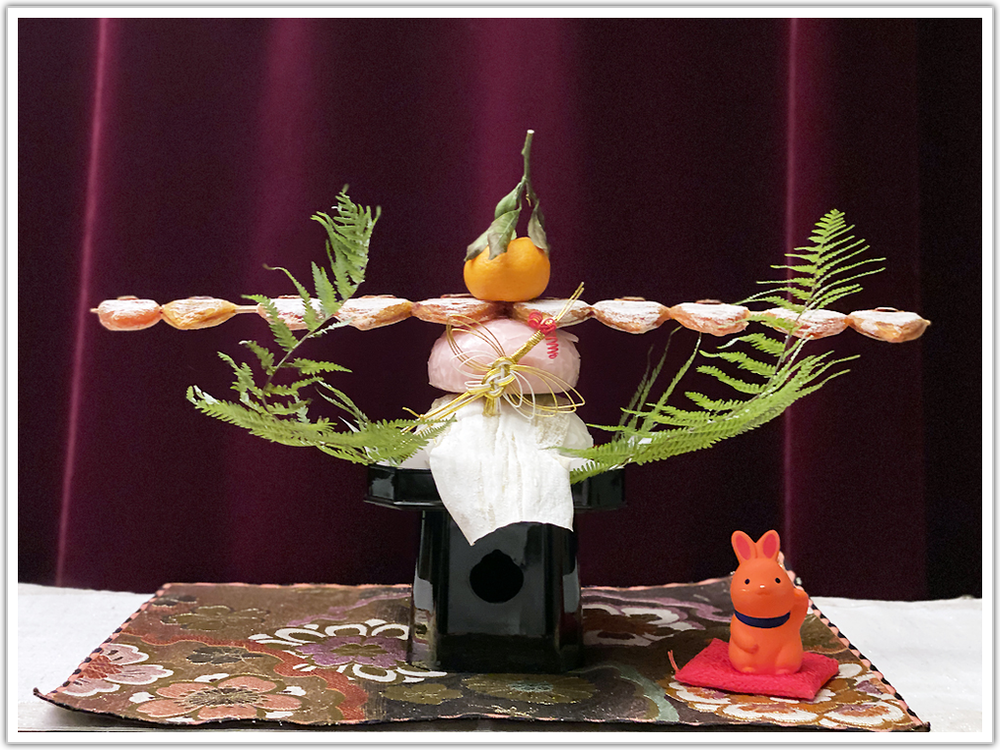
“Kagamimochi
“Kagamimochi” is two rounds of rice cakes (mochi) with an orange on top. Kagami” means a mirror and Mochi means a rice cake. The rice cake is shaped like a flat round mirror and that’s the reason why it is called “Kagami mochi” to appreciate and eat as a token of well-being.
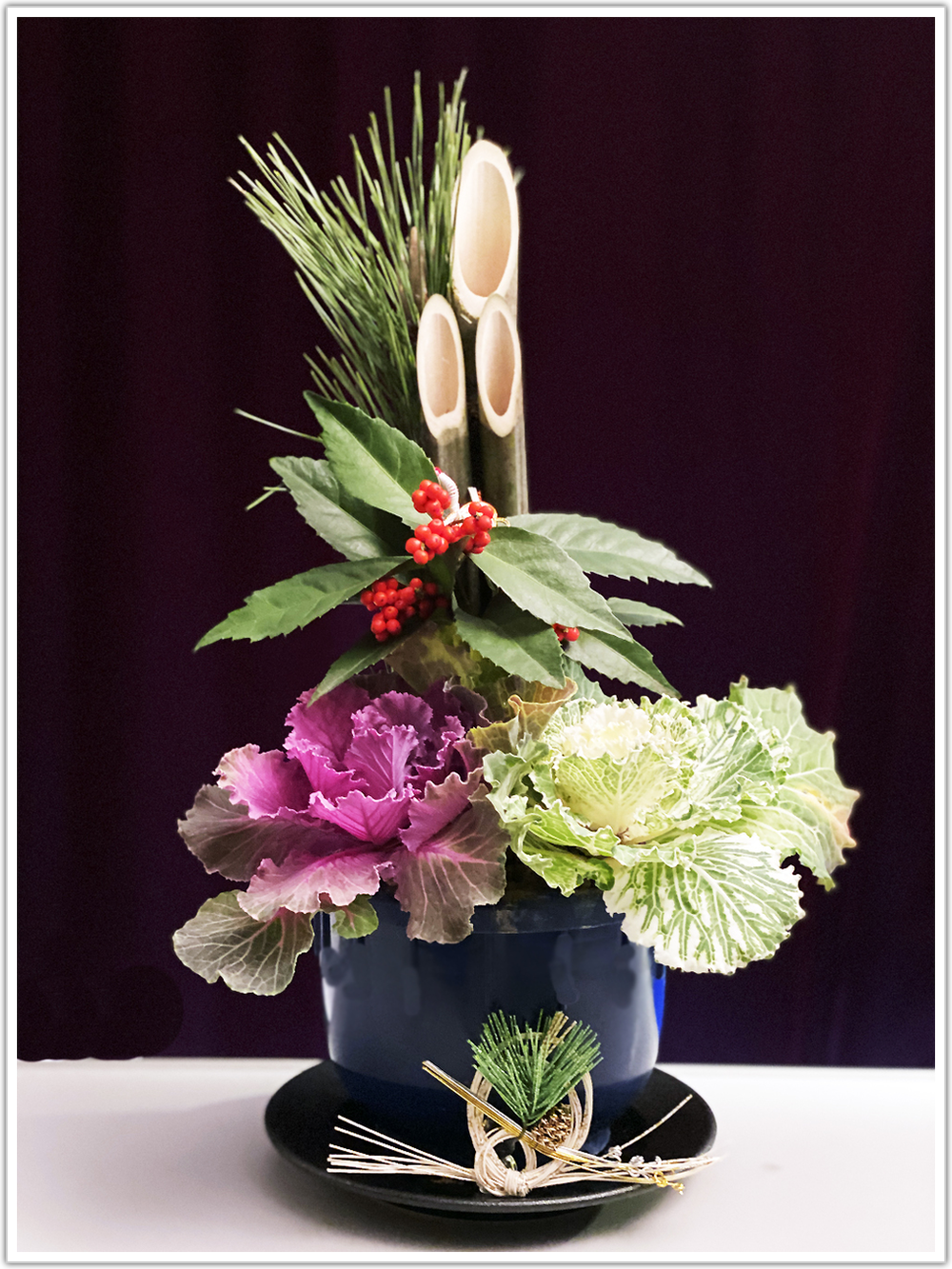
“Kadomatsu”
“Kado” means a gate and “Matsu” means a pine tree. “Kadomatsu” is a decoration consisting of bamboo and pine branches and symbolizes longevity and prosperity. It is said that this is the appropriate way to welcome gods.
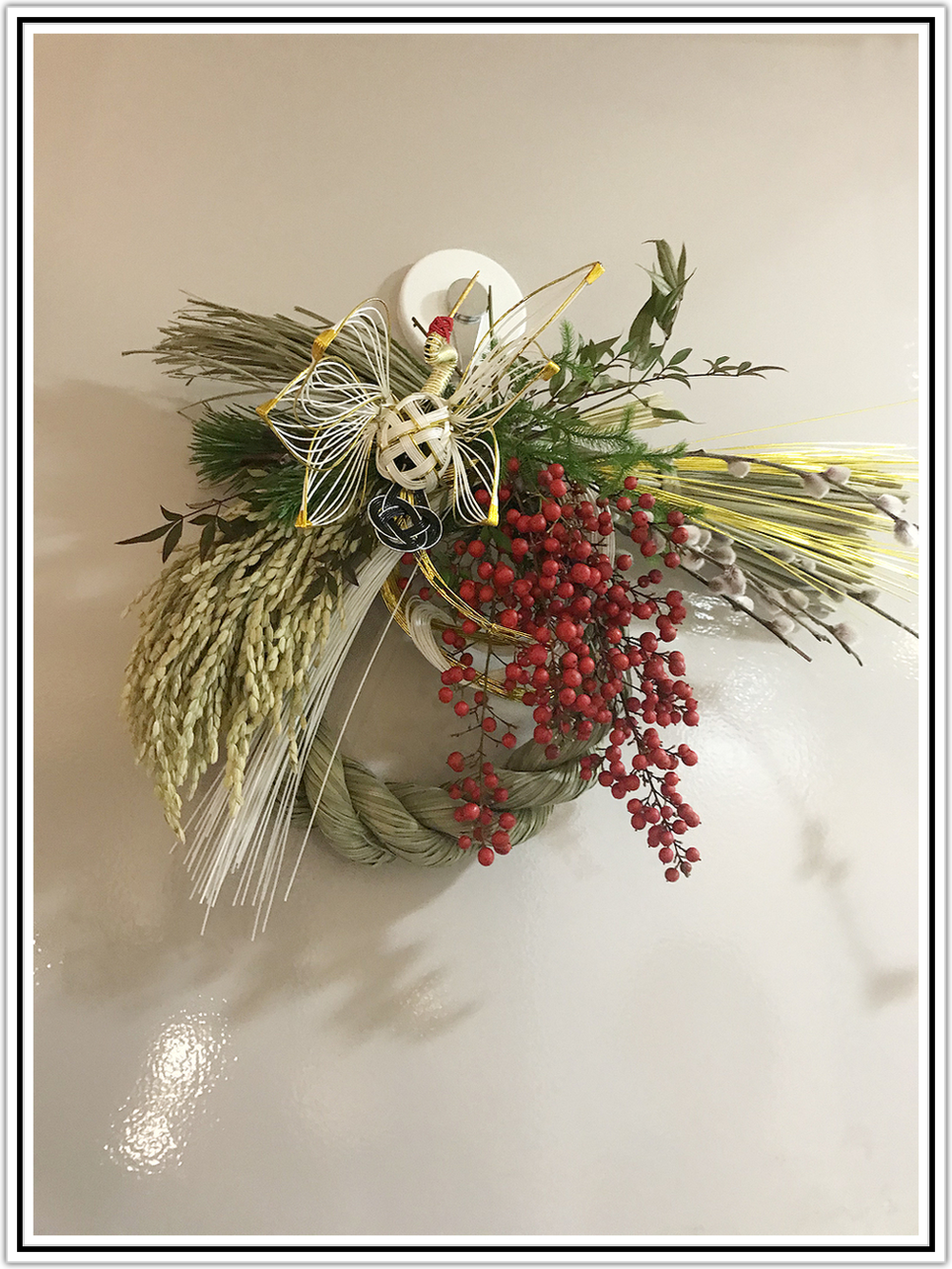
“Shimenawa”
“Shimenawa” is a twisted straw rope with fern leaves, an orange and other items of good omen. It is generally hung on doors during the New Year holidays and served as a charm against evil spirits.
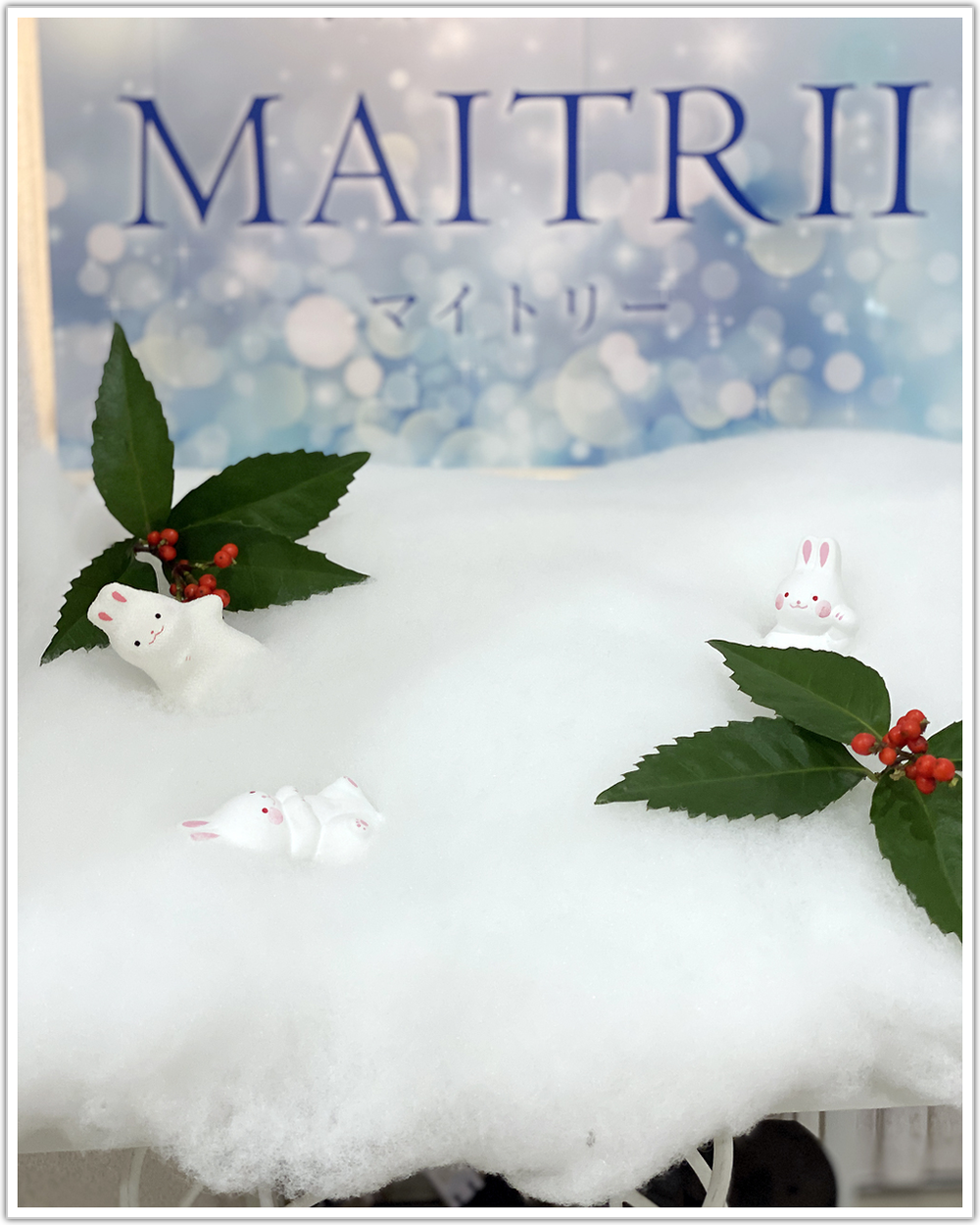
"ETO(The Japanese zodiac)"
The Japanese zodiac is one of the ancient methods of expression used to indicate time and direction.
Twelve different animals are used in the zodiac instead of numbers and stars.The cycle is completed every twelfth year.
2023 is the year of the rabbit!
February -Setsubun
In Japan, there is an event called “Setsubun” at the beginning of February.
Setsubun originally stands for the day before “the first day of spring, the first day of summer, the first day of fall, the first day of winter”. However, “Setsubun” refers to the division of the seasons between winter and spring nowadays.
Setsubun is the event held to pray for our happy and healthy life.It is held on Feb 3th or 4th.

The customs of Setsubun involve sowing roasted soybeans out the door to drive out evil spirits and welcome good luck.
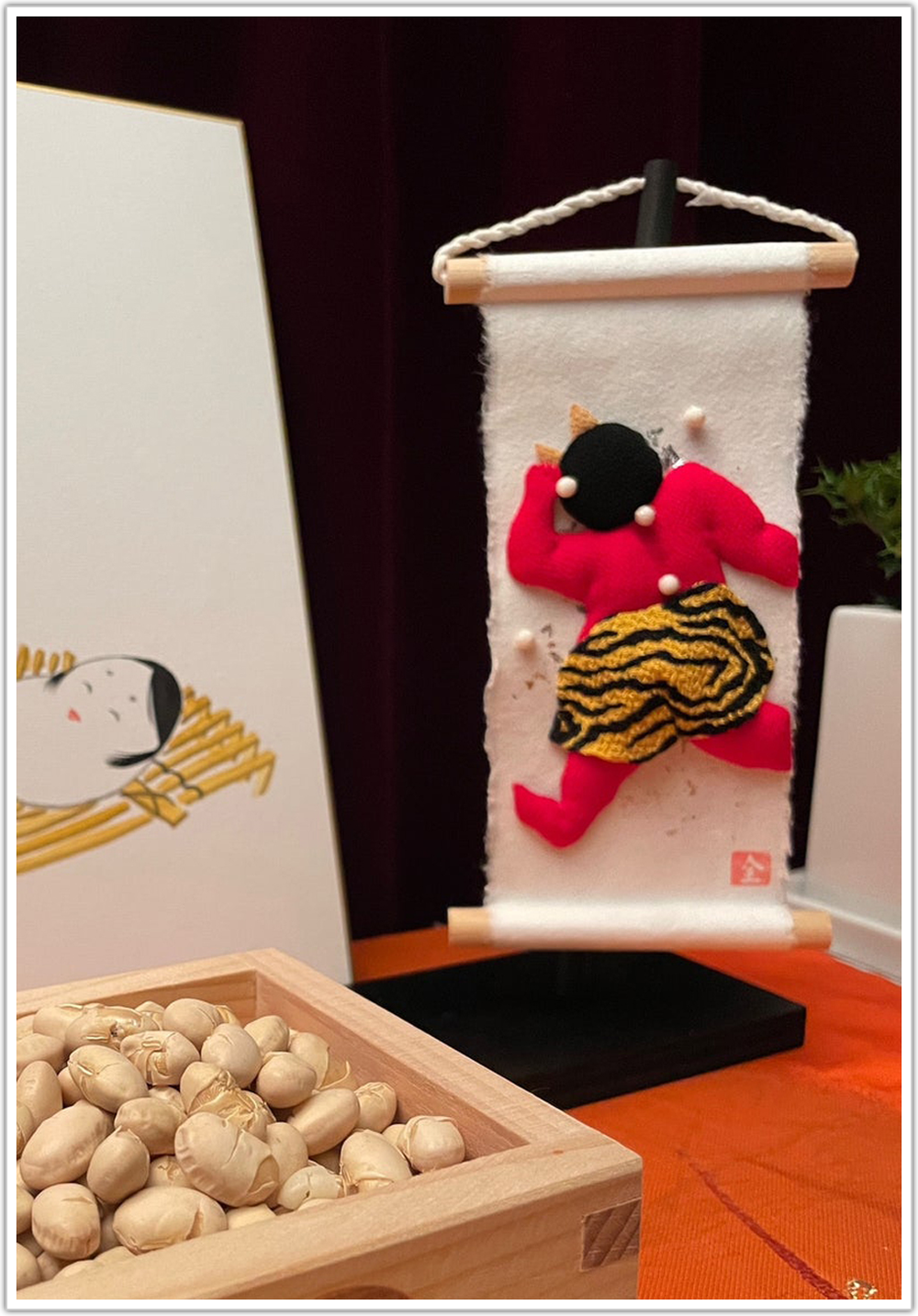
We throw away roasted soybeans with saying "Devils out! Happiness in!", and people eat beans as numbers as their age.
This is called "Mame-maki" (Mame means beans, maki means throwing away.)
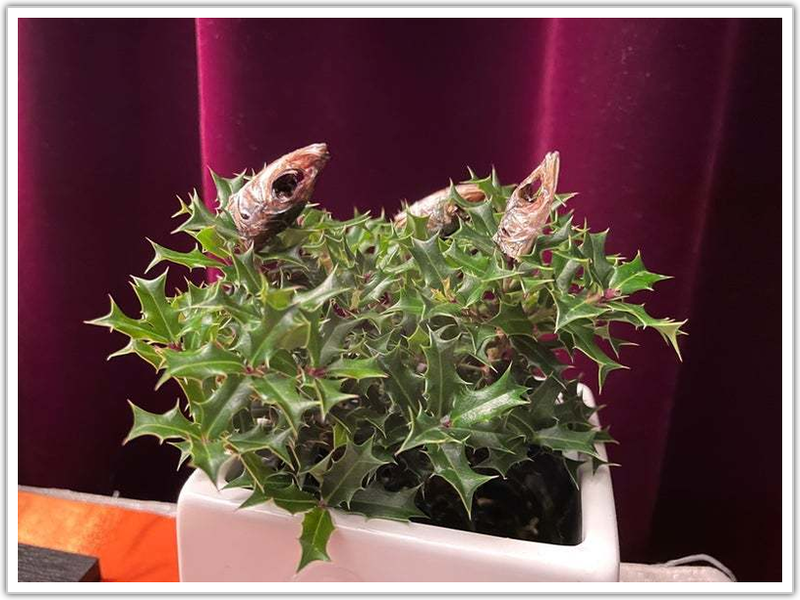
Some regions and families have a custom of decorating their entrance door with holly sardines (Hiiragi sardines). Hiiragi and sardines are also utilized to expel ogres. Ogres hate the prickles of holly and the scent of sardines, thus they are displayed at the entrance and used as means to exorcise ogres.
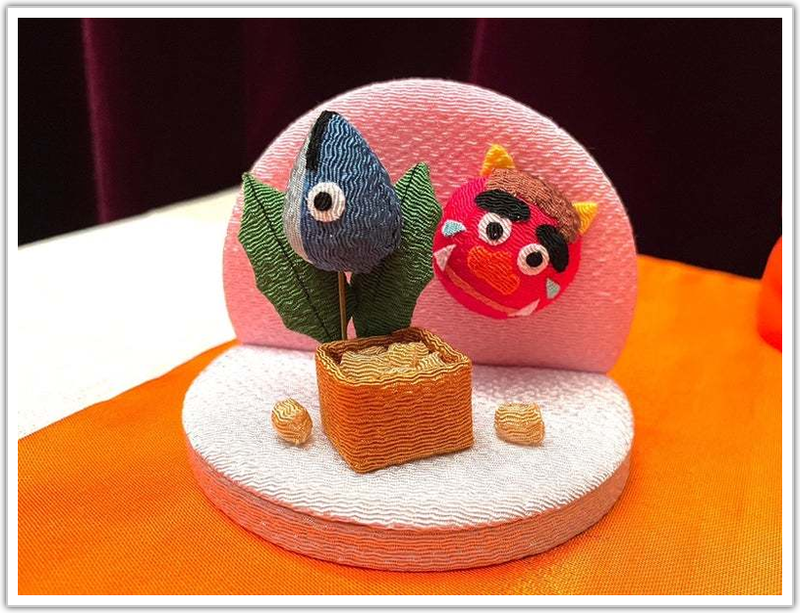
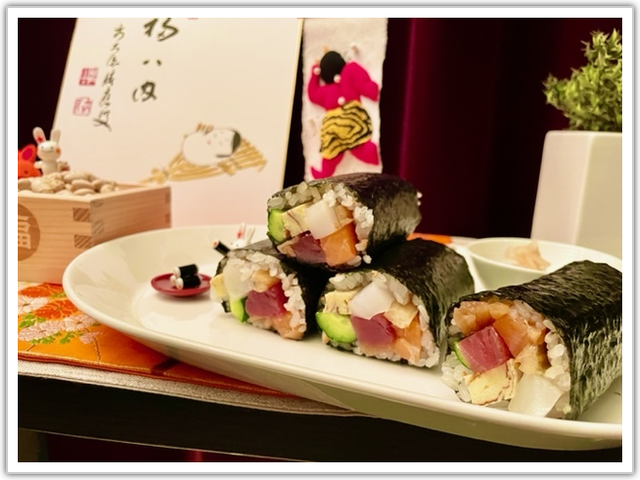
'Ehoumaki (Fortune sushi roll)'
Ehoumaki, a thick sushi roll, is traditionally eaten while facing the direction of good fortune for the year and making a wish. It is also an unspoken rule to eat a whole ehomaki in one mouthful.)
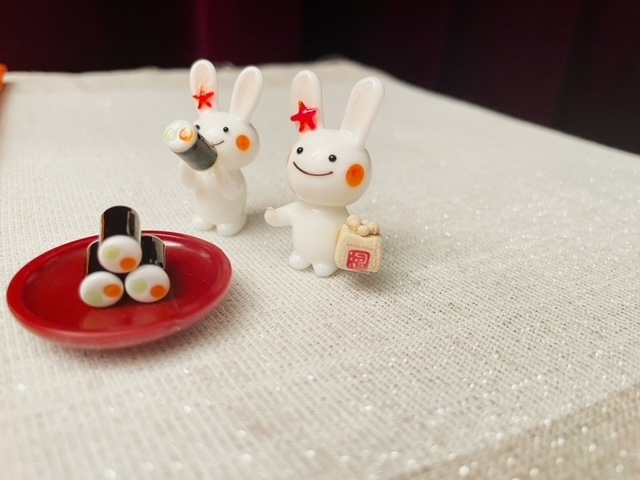
March -Hinamatsuri
Hinamatsuri is an occasion to pray for young girls’ growth and happiness.
In Hinamatsuri, most families with girls display dolls called Hina-ningyo.
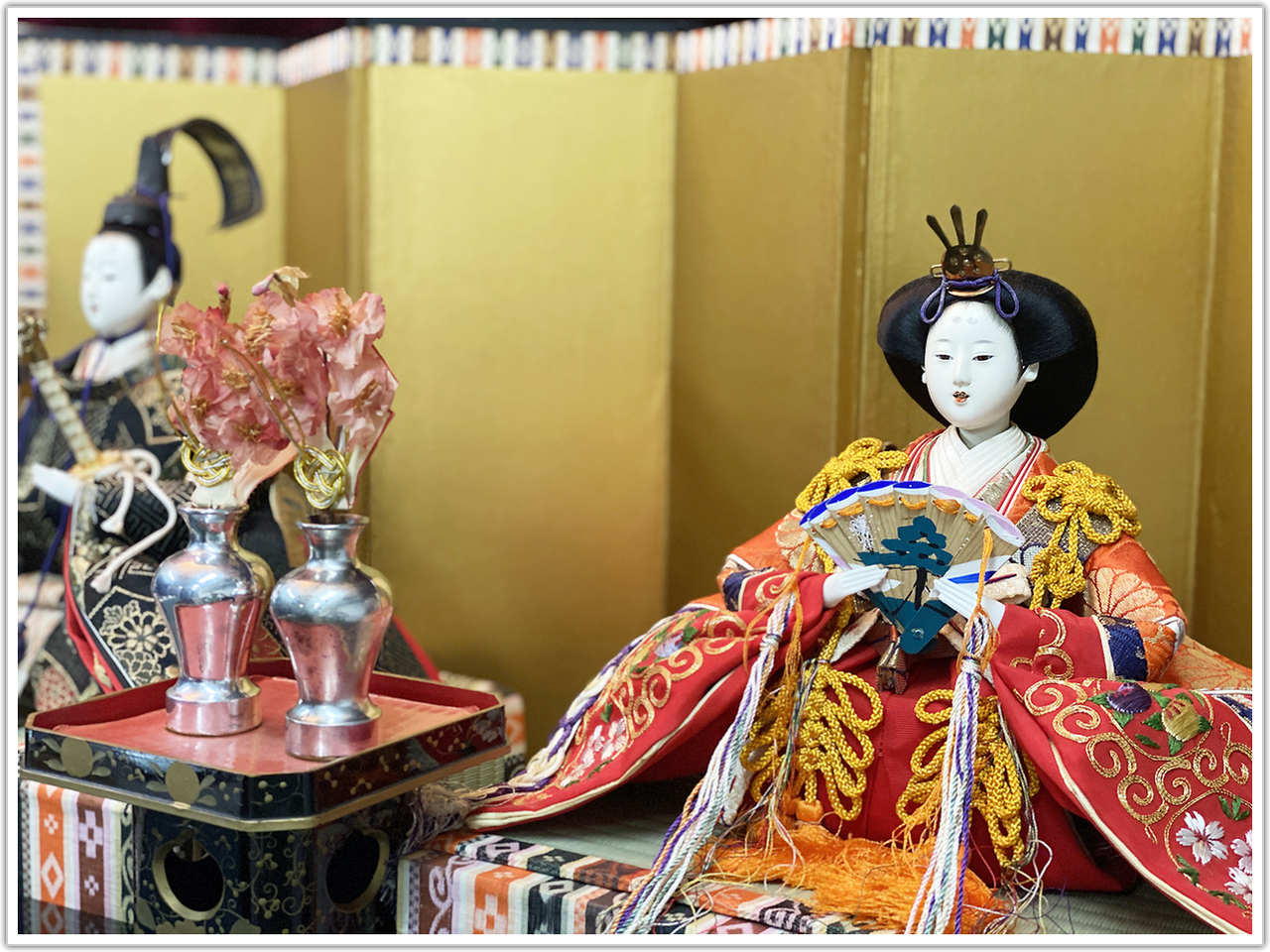
The hina dolls are believed to ward off evil and misery, and are displayed as a prayer for good health and happy marriage for girls in the future,as they represent the Japanese imperial family’s wedding.
The hina dolls dressed in traditional clothes from the Heian Period (794-1185) .The empress wearing 12 layers of KIMONO colled ‘Juuni-hitoe’, The present Emperor and Empress also dressed in this clothes in the enthronement ceremony that was held 5yeres ago.
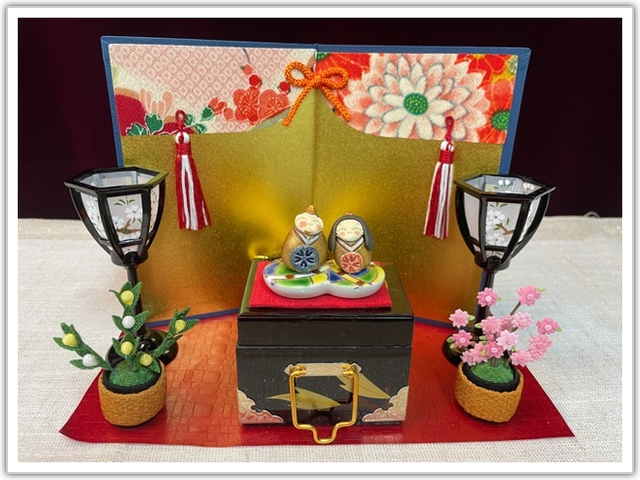
Mini hina dooos.

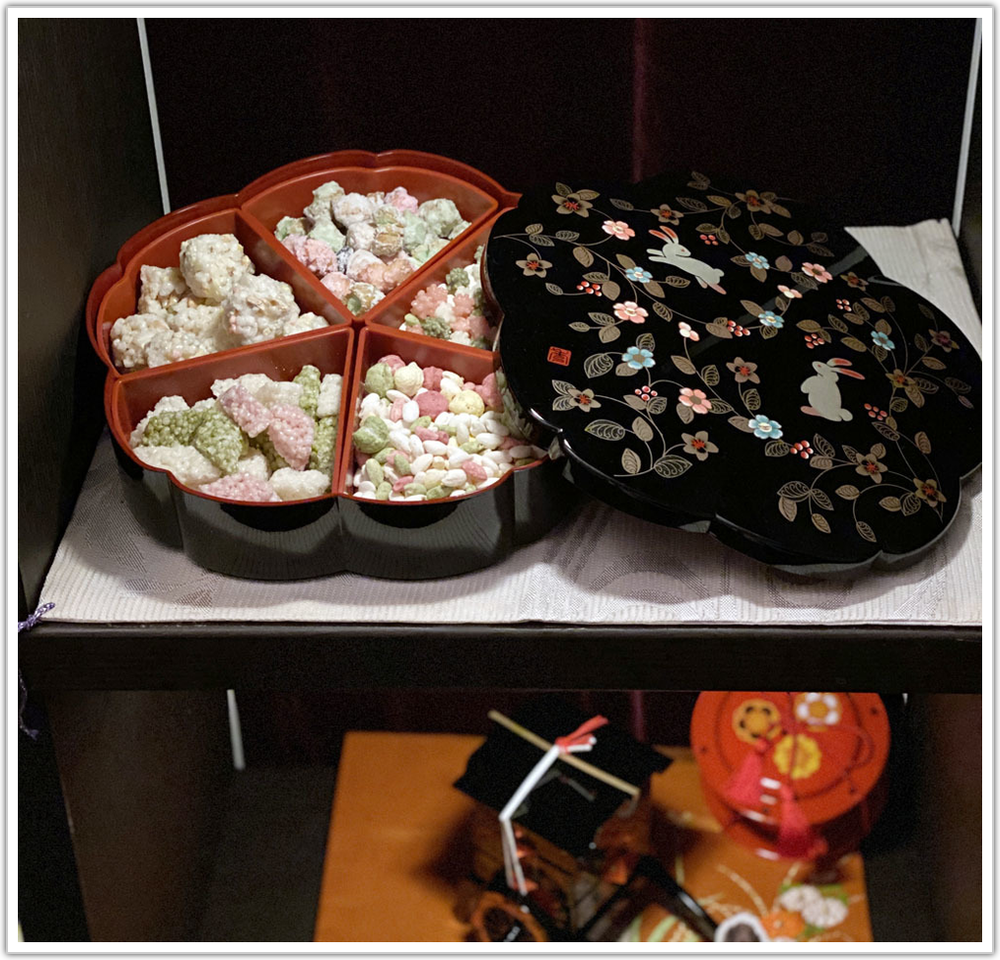
Hina-arare are bite-sized sweet rice crackers whose colors are pink, green, yellow and white These four colors stand for four seasons. They are a symbol of abundant year for girls, and wish for a happy life.
May -Tango-no-sekku
'Tango-no-sekku' is a Japanese annual event, expressing hope that each boy in the family will grow up strong and healthy.
While the Girl’s Festival is known as “Momo-no-Sekku,” the Boy’s Festival is called “Tango-no-sekku.”
'Tango-no-sekku' is also called “Boys’ Festival” or “Children’s Day.”
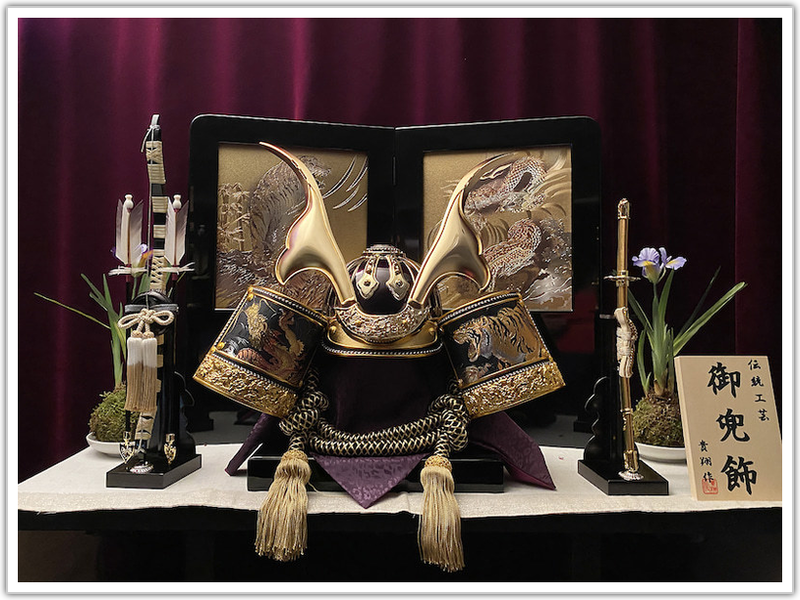
Families with boys display a samurai warrior helmet replica or a samurai warrior doll inside the house, and set up carp streamers outside for success in life.
Displaying the samurai warrior’s suit of armor has the meaning of protecting the boys’ body.
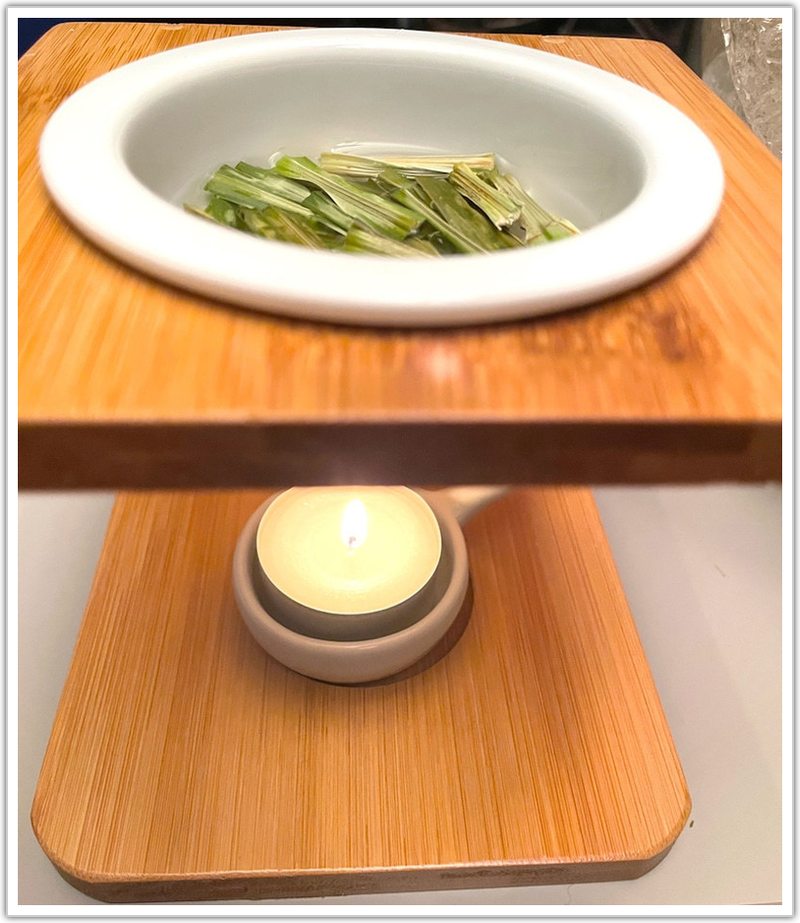
We decorate a sweet flag at the front door on Boy’s festival and take a sweet flag bath on that night, because it is believed that a sweet flag has power to protect against evils.
So we put tha sweet flag in a hot water on the essential oil burner so that the scent of sweet flags makes you relaxed.
August -Fireworks Festival & Summer festivals
Most summer festivals are held between July to August.
Summer festivals originally had meanings like praying to gods for a good harvest, but nowadays the origins of summer festivals aren’t recognized so much.
And HANABI TAIKAI is a fireworks festival held in various parts of Japan from July to August.
The size of the fireworks festival varies, but in a large-scale fireworks festival, 20,000 to 30,000 fireworks are launched.
The fireworks viewing time is about one hour, and about 1.5 million people visit the large-scale fireworks festival.
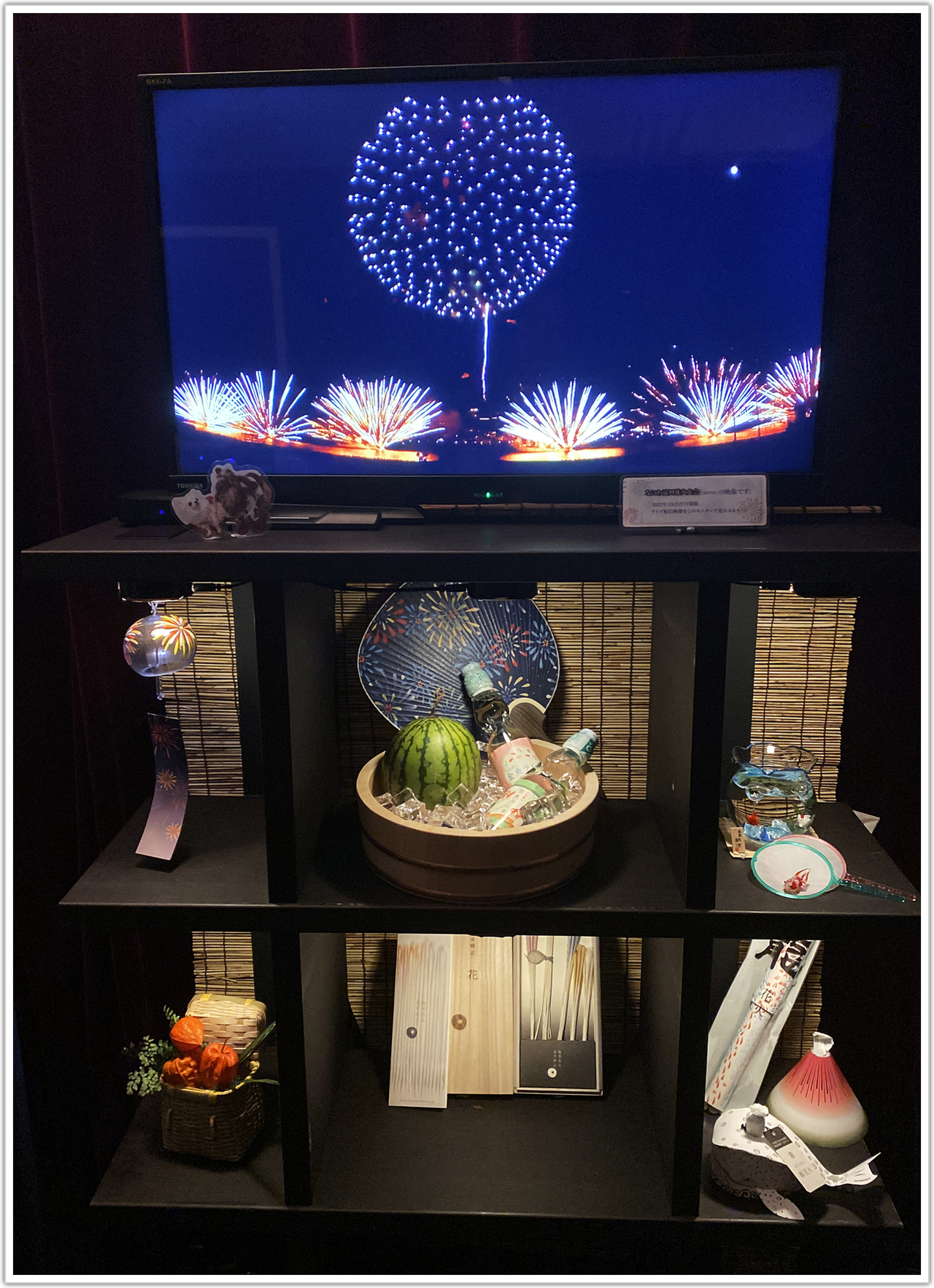
There are colorful round fireworks, fireworks that draw pictures of characters, fireworks that look like a ring, fireworks that hang down like a willow, and fireworks that small fireworks fly around after the fireworks burst.
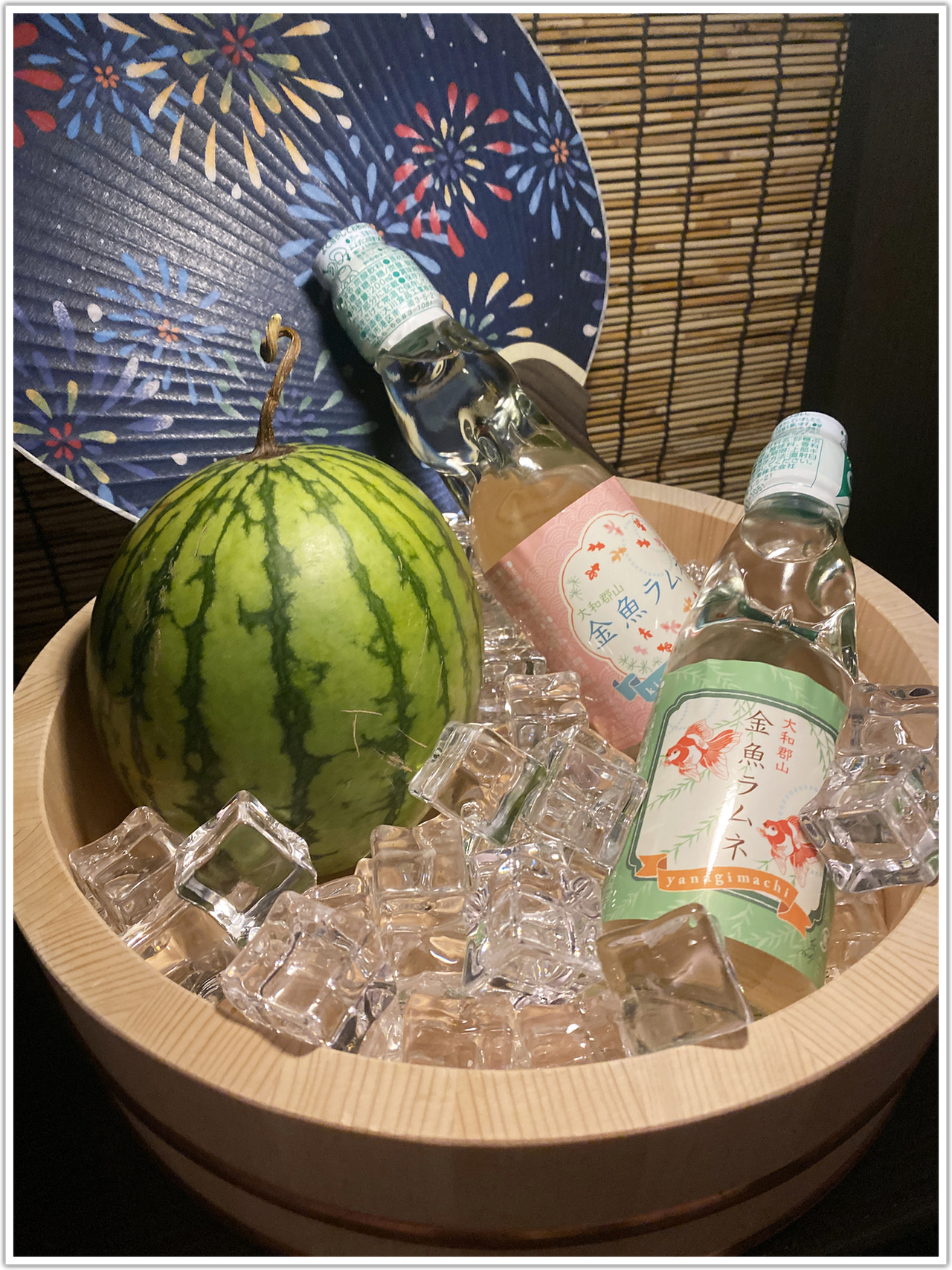
Festival stalls lined up along the streets, and you can enjoy typical B gourmet food and traditional games like water balloon fishing or a shooting gallery.
If you find one, just walk around and check things out!
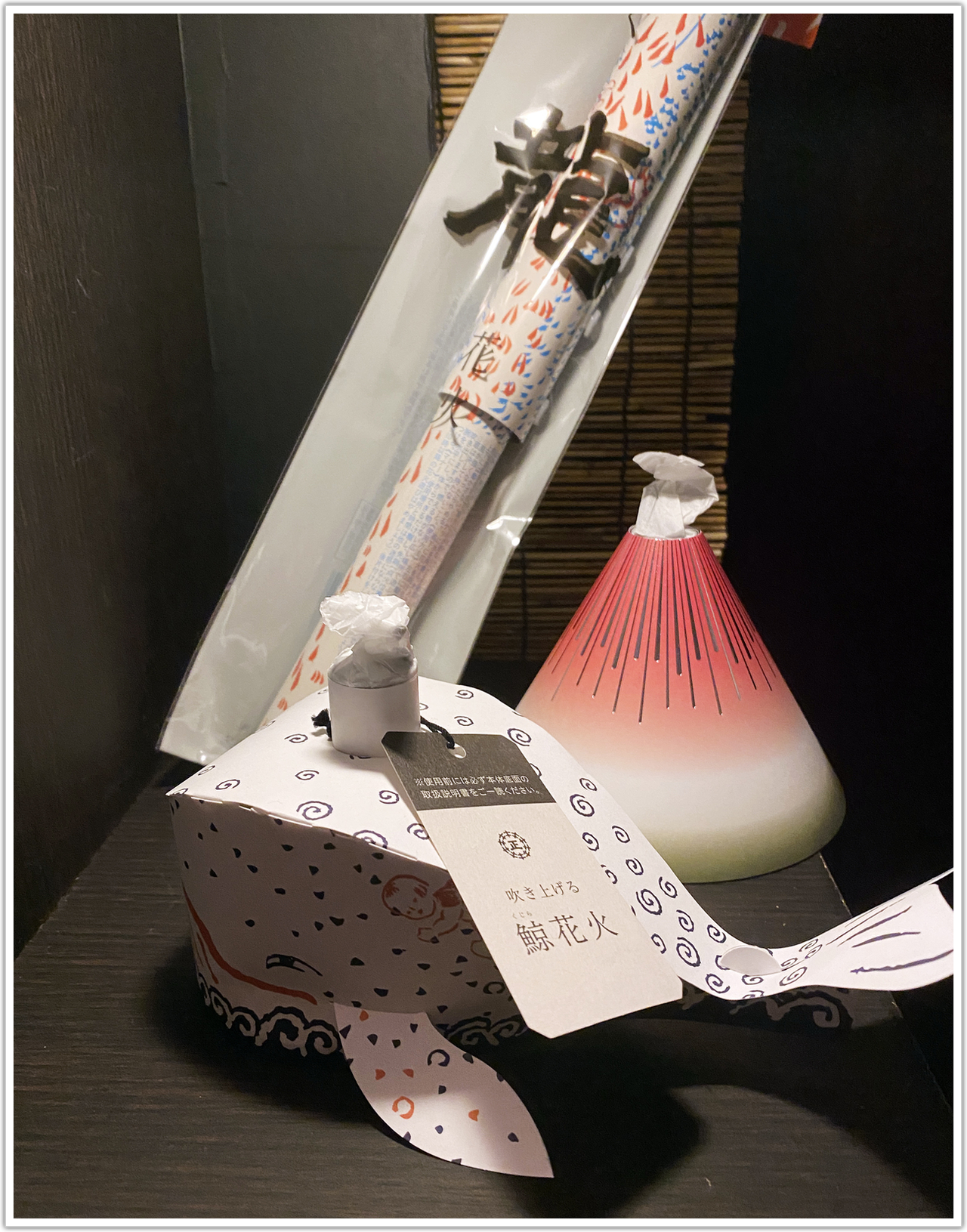
Handmade HANABI(fireworks) made in Japan.
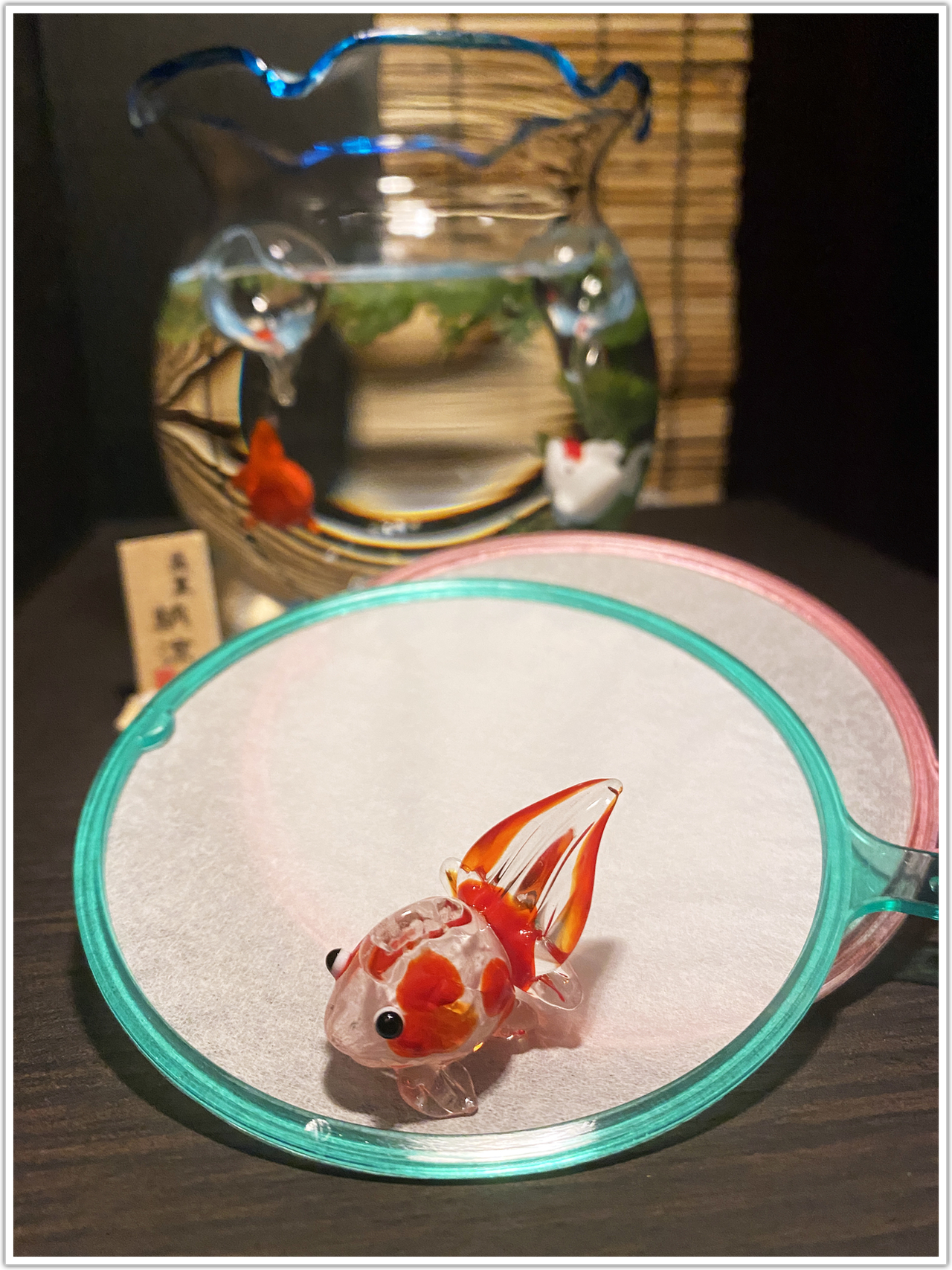
“Goldfish scooping” is the most famous game for children. You need to scoop goldfish from a basin with a scoop. The scoop is made from a thin sheet of Japanese paper, so you need to be careful so that the paper will not be torn apart while you are playing.
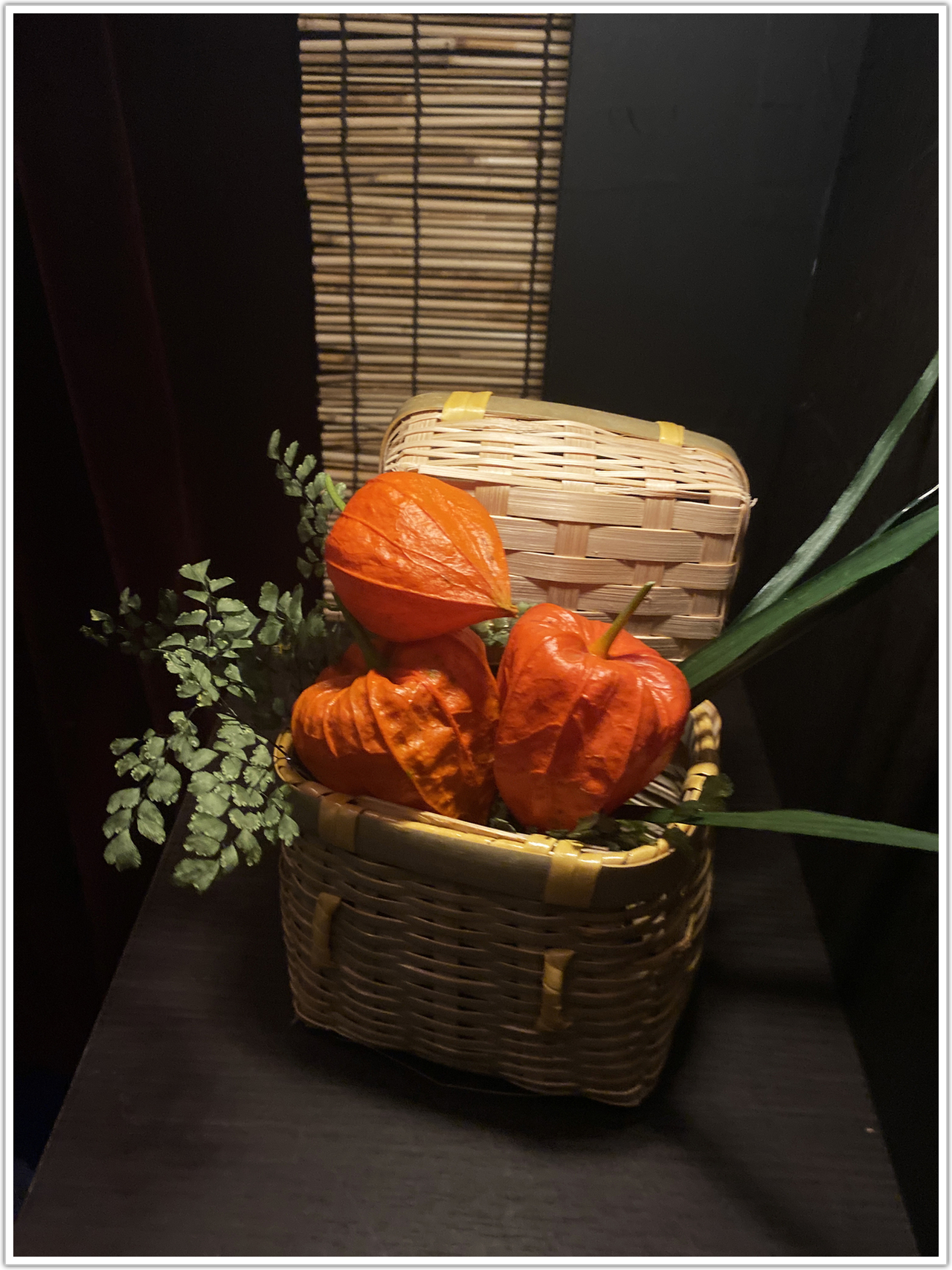
This is Winter Cherry.
In Japan,'Hozuki ichi' are held in many places in summer.Hozuki ichi is a market in which Winter Cherry Plants are sold.The most famous market is held on July 9 and 10 at Senso-ji Temple in Asakusa.
Especially July 10 is called ”shiman rokusen nichi”.If you visit the temple on July 10, it corresponds that you have visited the temple for 46,000 days.It means you can get benefits of 46,000 days!
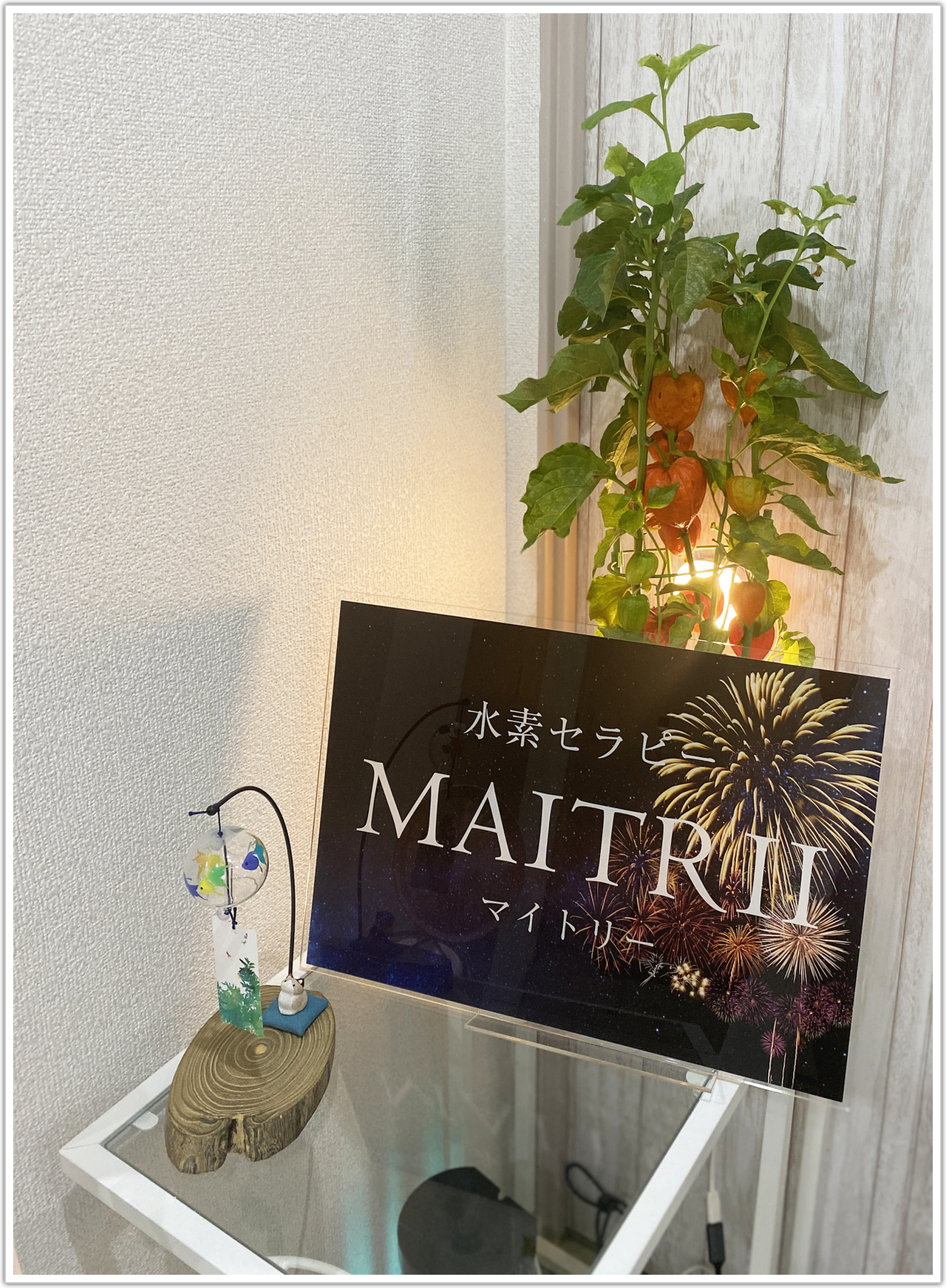
October -Autumn Festivals
Japanese people have fall festivals as a means of saying thank you to god for a plentiful fall harvest.
From ancient times, festivals have been strongly associated with people’s lives in Japan.
The Japanese word for festivals, matsuri (祭り), is originally derived from “祀り(matsuri)”, which has the same pronunciation but means enshrine or worship.
Matsuri used to be a ritual for thanking gods and deities in nature.
The fundamental concept is called Animism, which is from the Japanese religion Shinto that regards the existence of deities everywhere in nature.
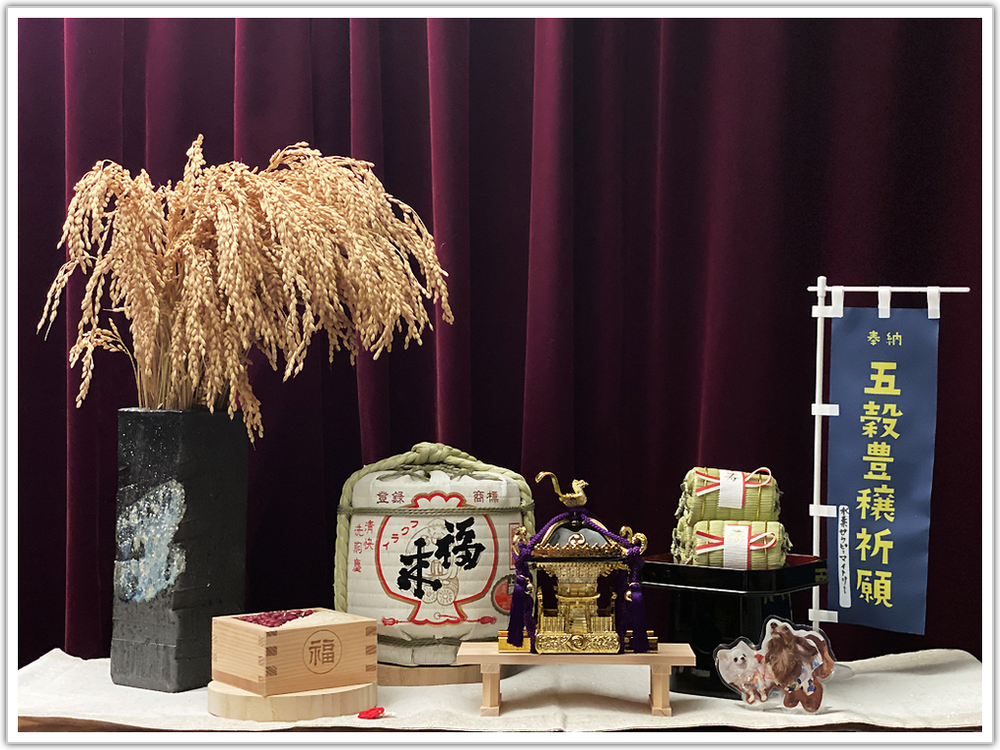
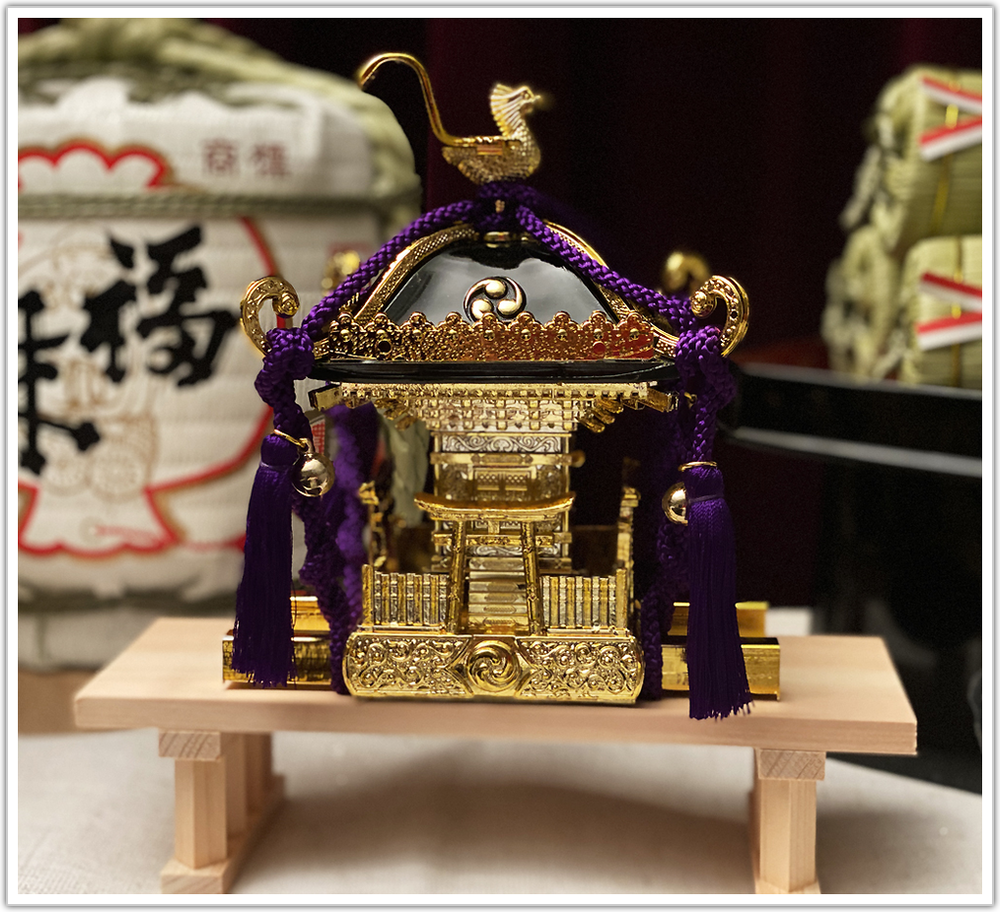
This is a replica of a 'MIKOSHI', portable Shinto shrine.
Mikoshi, a portable shrine, is a carriage for Gods.
At festivals, Japanese people gather around the Mikoshi and carry it on their shoulders in order to worship gods.
While carrying the Mikoshi, the carriers often yell “Wasshoi, Wasshoi.”
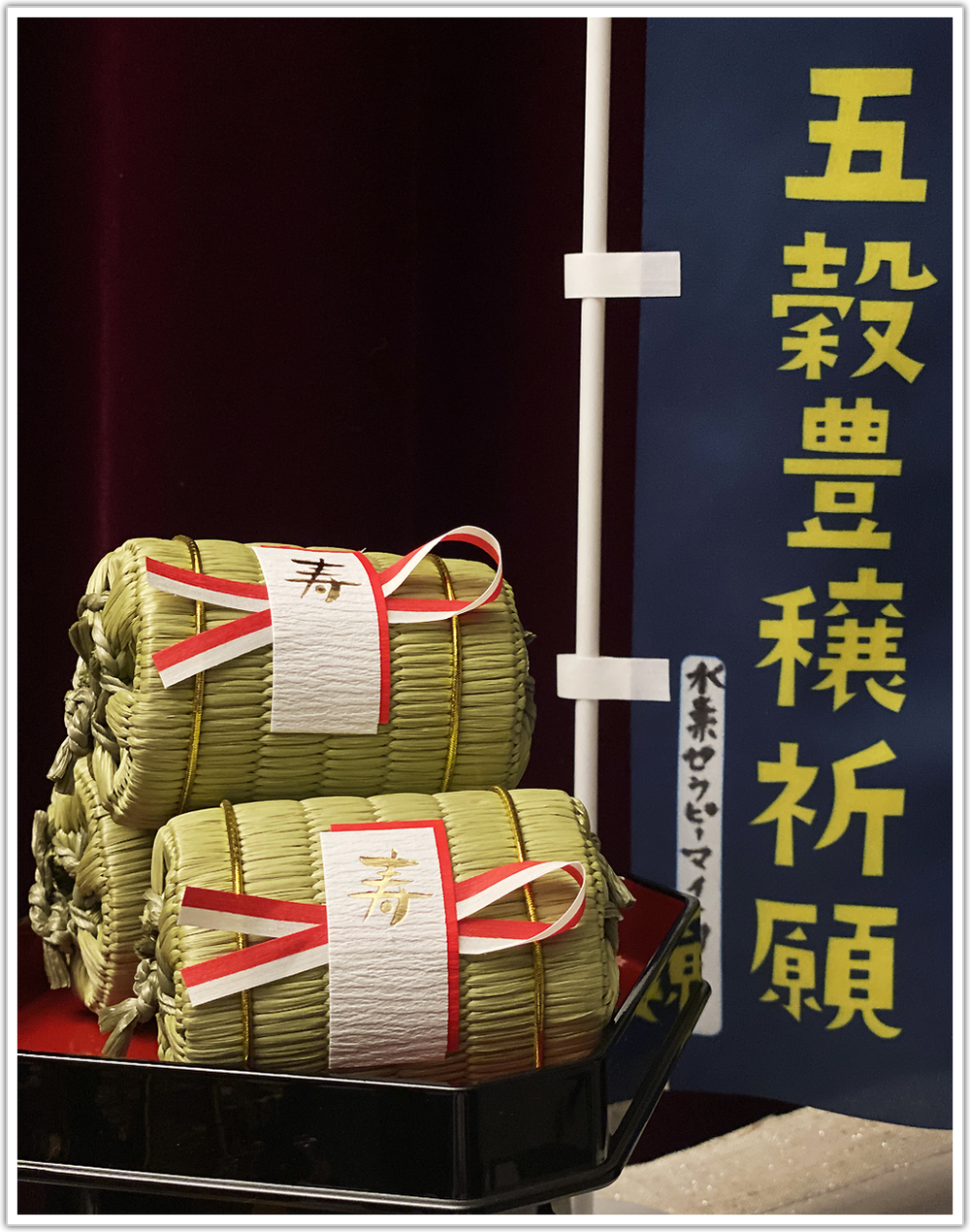
This is a straw rice bag.
We celebrate the huge harvest of the 5 grains and offer a lot of rice bag.
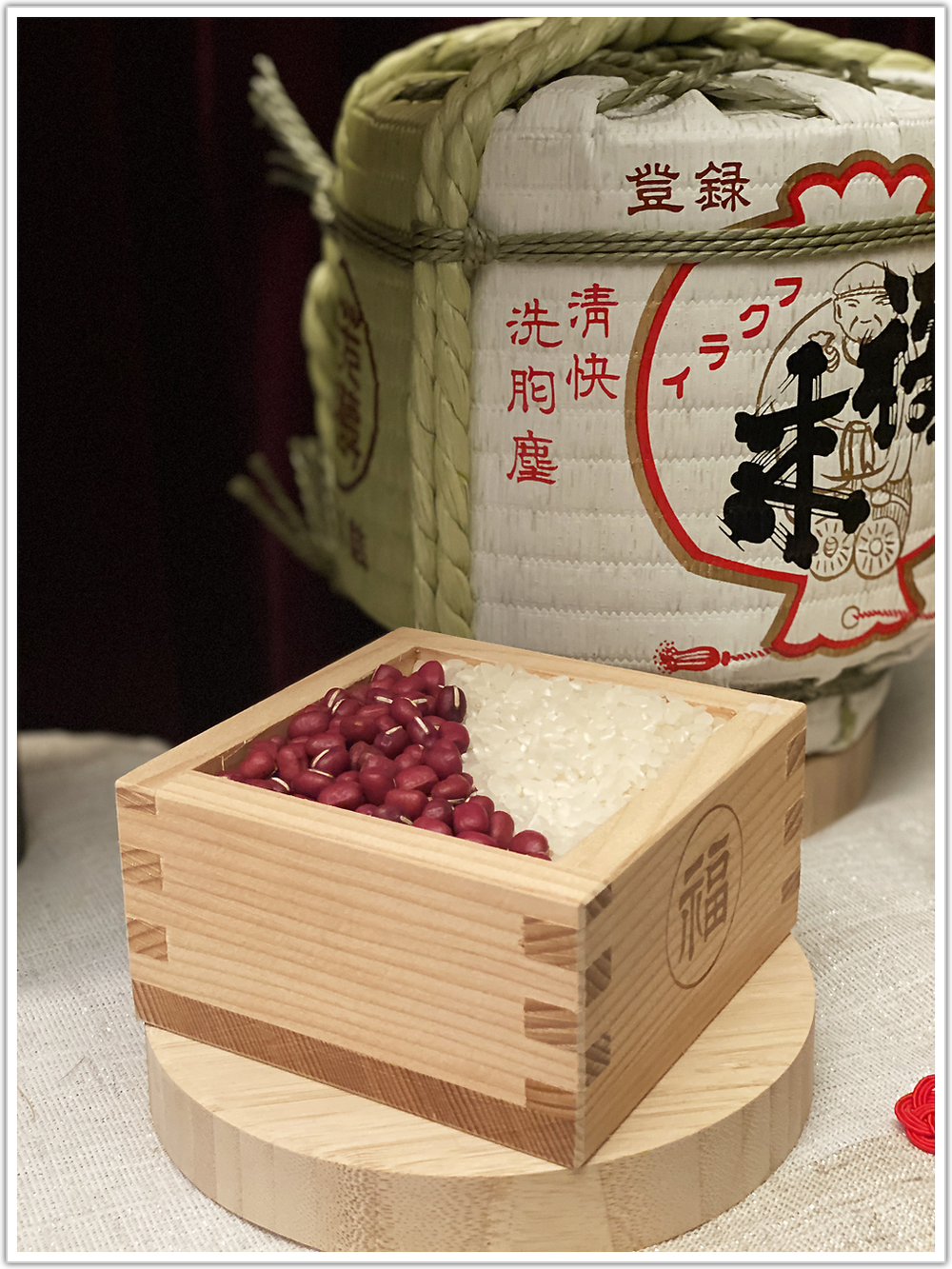
We also offer red beans and white rice.
A color combination of red and white is considered celebratory in Japan.
Christmas!!!
From November until February, cities are beautifully decorated with Christmas lights in Japan.
Many large shopping malls, parks and gardens, busy streets, and special venues become a sea of colorful lights.
Many people enjoy the festive atmosphere at Christmas when the city is lit up with lights.
Of course we enjoy decorating for Christmas at MAITRII too!
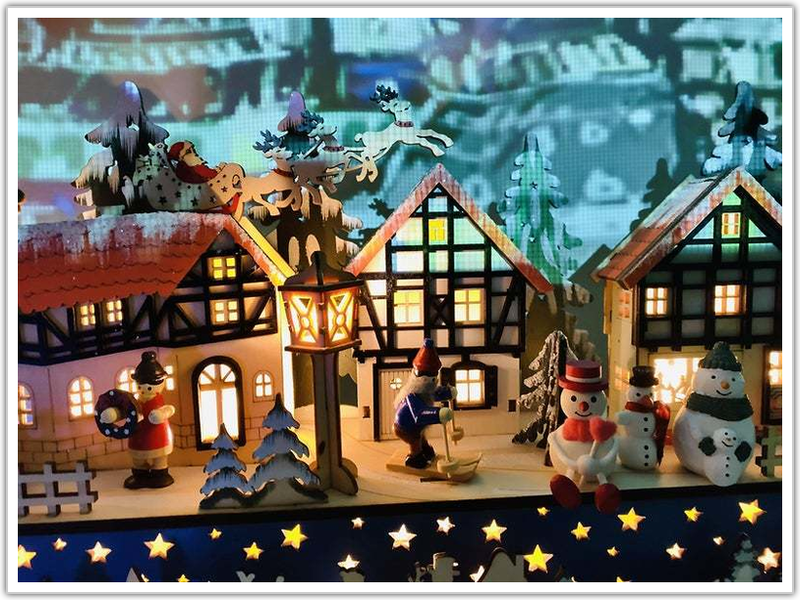
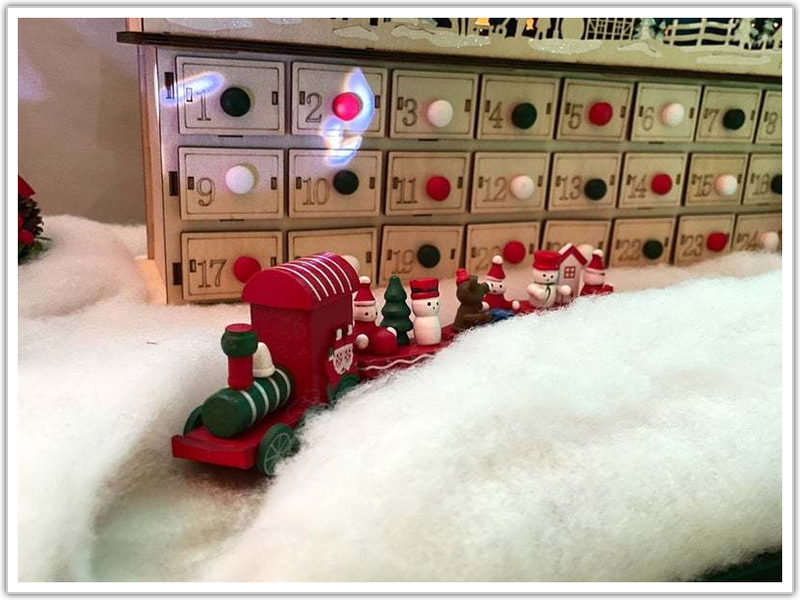
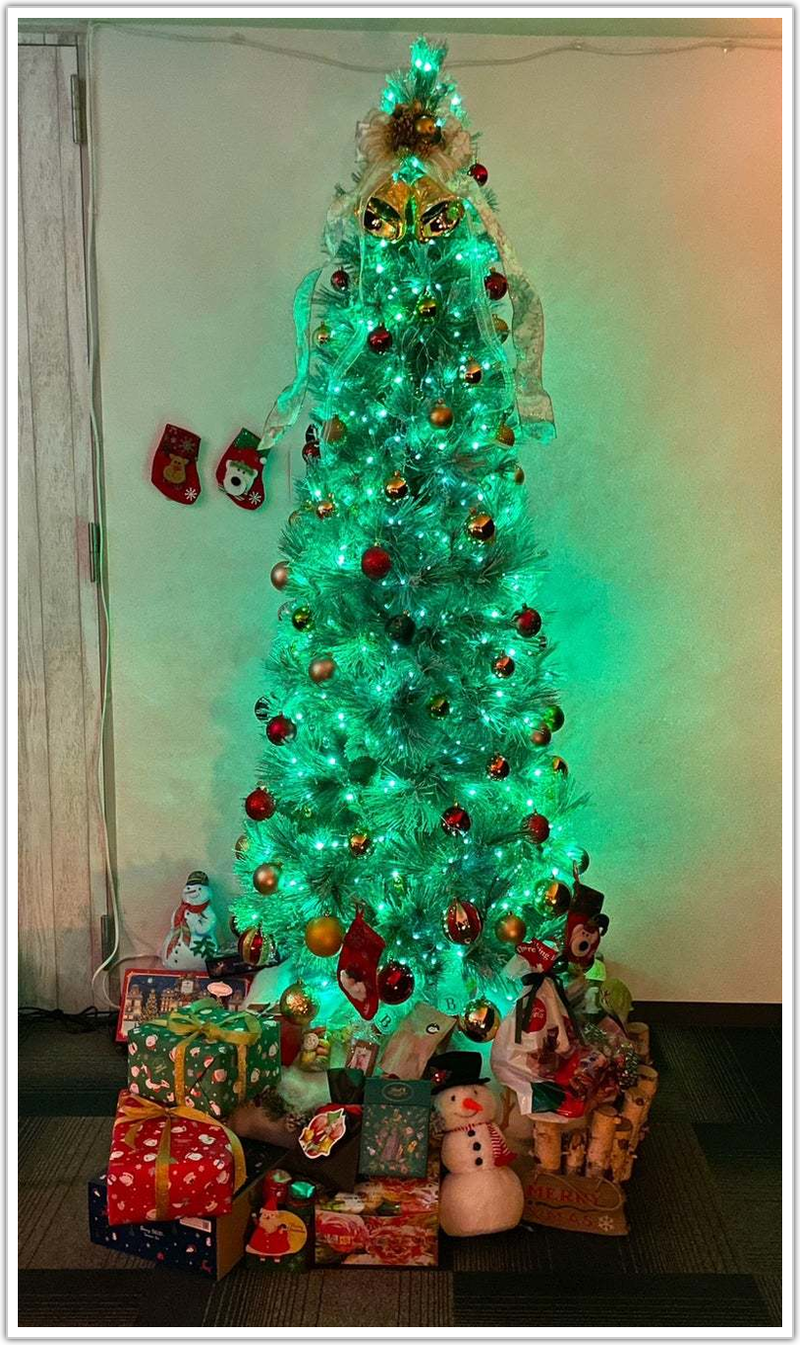

Handmade Hexenhaus

Projection mapping.
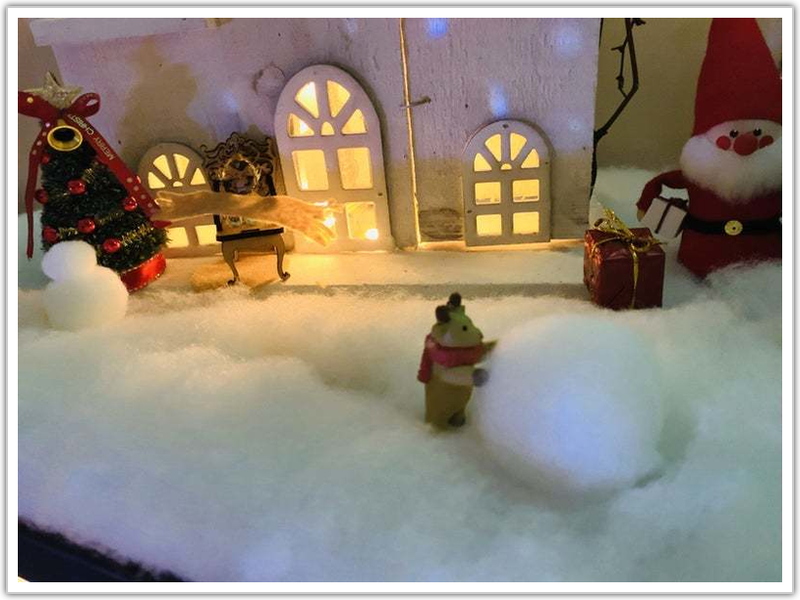
Reindeer are making snowmen♪